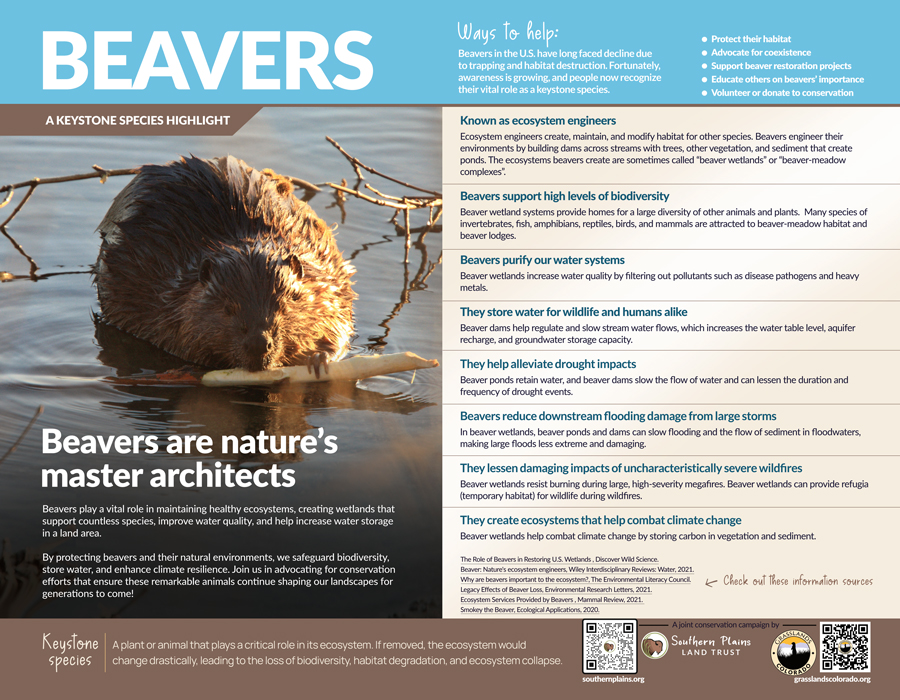
Beavers are nature’s master architects
Beavers play a vital role in maintaining healthy ecosystems, creating wetlands that support countless species, improve water quality, and help increase water storage in a land area.
By protecting beavers and their natural environments, we safeguard biodiversity, store water, and enhance climate resilience. Join us in advocating for conservation efforts that ensure these remarkable animals continue shaping our landscapes for generations to come!
Known as ecosystem engineers
Ecosystem engineers create, maintain, and modify habitat for other species. Beavers engineer their environment by building dams across streams with trees, other vegetation, and sediment that create ponds. The ecosystems beavers create are sometimes called “beaver wetlands” or “beaver-meadow
complexes”.
Beavers support high levels of biodiversity
Beaver wetland systems provide homes for a large diversity of other animals and plants. Many species of invertebrates, fish, amphibians, reptiles, birds, and mammals are attracted to beaver-meadow habitat and beaver lodges.
Beavers purify our water systems
Beaver wetlands increase water quality by filtering out pollutants such as disease pathogens and heavy metals.
They store water for wildlife and humans alike
Beaver dams help regulate and slow stream water flows, which increases the water table level, aquifer recharge, and groundwater storage capacity.
They help alleviate drought impacts
Beaver ponds retain water, and beaver dams slow the flow of water and can lessen the duration and
frequency of drought events.
Beavers reduce downstream flooding damage from large storms
In beaver wetlands, beaver ponds and dams can slow flooding and the flow of sediment in floodwaters, making large floods less extreme and damaging.
They lessen damaging impacts of uncharacteristically severe wildfires
Beaver wetlands resist burning during large, high-severity megafires. Beaver wetlands can provide
refugia (temporary habitat) for wildlife during wildfires.
They create ecosystems that help combat climate change
Beaver wetlands help combat climate change by storing carbon in vegetation and sediment.
Ways to help:
Beavers in the U.S. have long faced decline due to trapping and habitat destruction. Fortunately, awareness is growing, and people now recognize their vital role as a keystone species.
- Protect their habitat
- Advocate for coexistence
- Support beaver restoration projects
- Educate others on beavers’ importance
- Volunteer or donate to conservation
Check out these information sources:
The Role of Beavers in Restoring U.S. Wetlands - discoverwildscience
WIREs Water - 2020 - Brazier - Beaver Nature s ecosystem engineers.pdf
Why are beavers important to the ecosystem? - The Environmental Literacy Council
Wohl_2021_Environ._Res._Lett._16_025010.pdf
Ecosystem-services-provided-by-beavers-Castor-spp.pdf
Keywords to use in Social posts:
#ColoradoWildlife #GrasslandsColorado #KeystoneSpecies #RiverGuardians # #BeaversBuildHabitats #BeaversForBalance #HabitatConnectivity #ProtectWildCorridors #RewildColorado #RewildtheWest #Biodiversity #NativeHabitat #WetlandsMatter #BeaverWetlands #FrontRangeWildlife #ColoradoBeavers